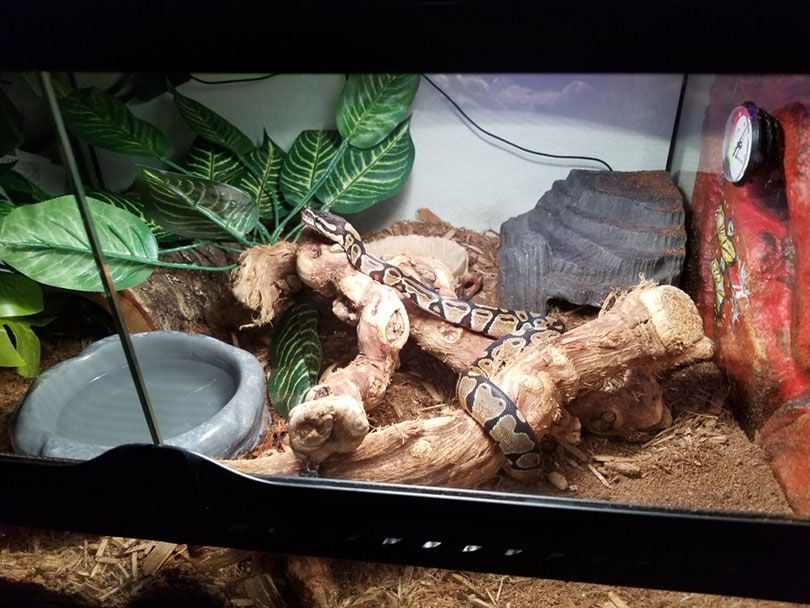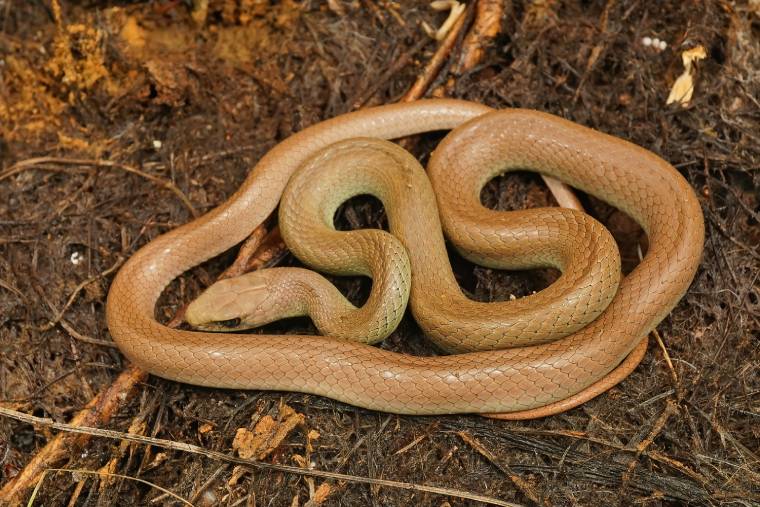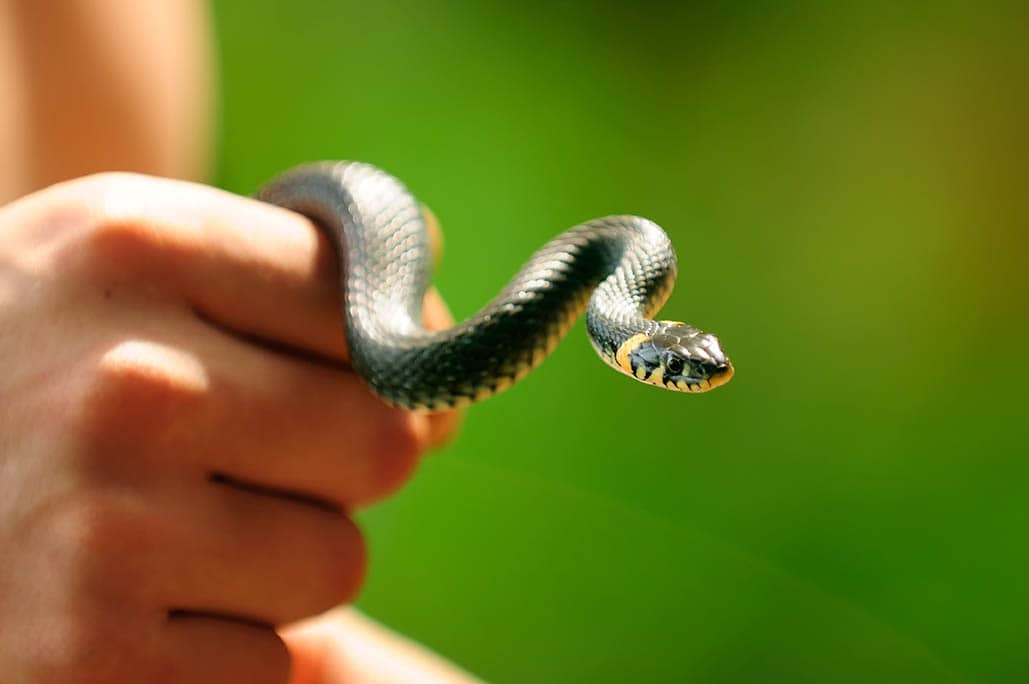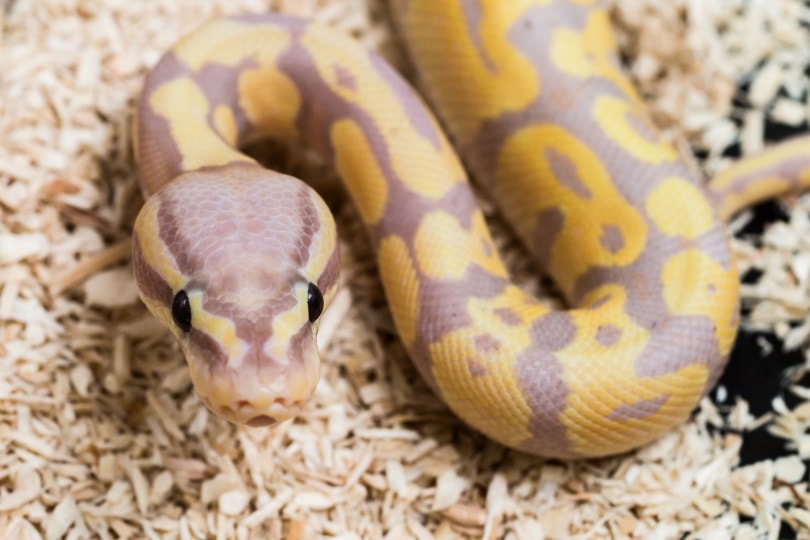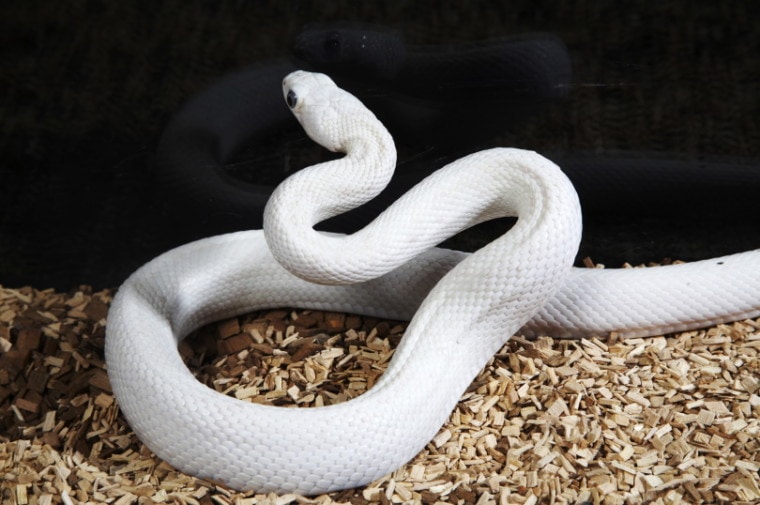
Every reptile enthusiast knows that cold-blooded creatures have a very different way of eating and digesting food. If you’re new to snake-owning, you’re probably brushing up on all the tidbits of knowledge that will help you care for your ball python.
Ball pythons have relatively easy eating requirements. Even though you can skip several days between feedings—you don’t want to skip too many. An adult ball python can survive up to 6 months without eating, but such a long period can be disastrous for the health of the reptile.
Let’s break down how long ball pythons can and should go between meals—and how often you should feed them for an ideal diet.
Ball Python Diet
Ball pythons have a very specific diet in captivity, enjoying frozen or live mice to feast on. The size and frequency of feedings depends on their life stage.
As a general rule of thumb, you should feed your ball pythons mice that are roughly 1.25 times the size of the midsection of your snake.

Juveniles
Juvenile ball pythons eat mice from pinkies to small adults as they grow. Generally, they need to eat twice per week to keep up with their metabolism at this state.
Adults
Adult ball pythons eat full-sized mice or rats once they reach maturity. Adults need one full meal once every week or two.
Live vs. Frozen Diets for Ball Pythons
As you’re probably aware, once your python is big enough, you can choose to feed them live or frozen rodents. Many owners share different opinions on the subject, so ultimately, it comes down to what you think is best for your snake.
However, consistency is key. If you feed your snake live mice, you should probably always feed them live mice. Switching to frozen can be like going from prime rib to a microwaved dinner—it’s just not the same. So, knowing the method you want to stick to before you first start offering mice is a good idea.
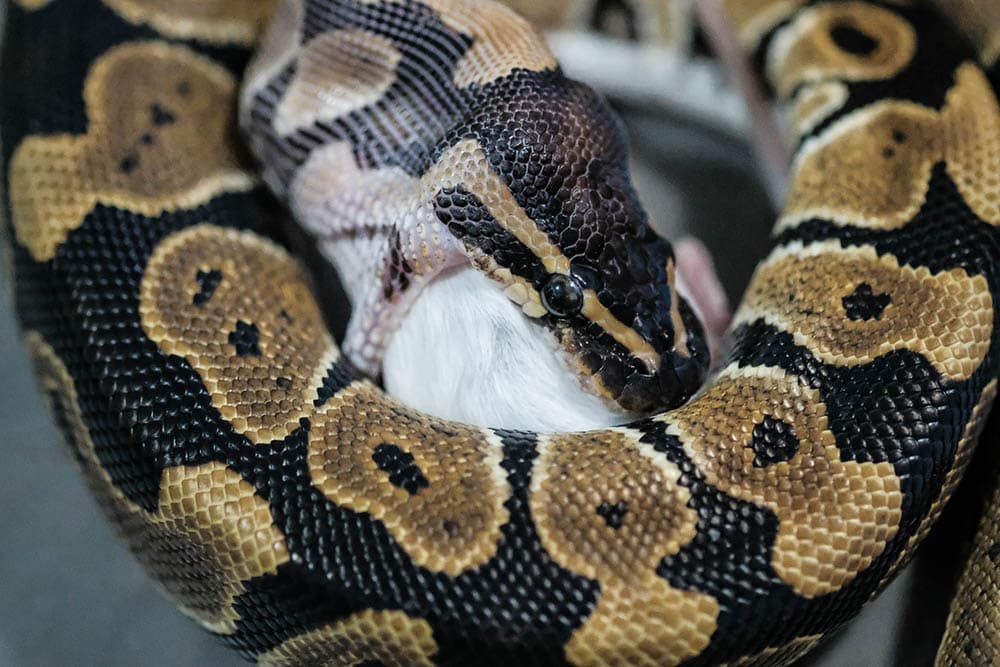
Frozen
Frozen mice come in a variety of sizes. They are conveniently prepackaged and fit nicely into a freezer at home. You can unthaw a mouse as needed and store the rest away. As your ball python ages, you can gradually move up a size, depending on their width.
Here are a few pros and cons.
Live
Feeding your ball python live mice allows them to use their predatory instincts and put them to good use. They can catch their prey as they would in the wild and eat it accordingly. The blood is flowing, and the body is naturally warm, unlike thawing dead mice. That being said, several vets do not recommend offering live mice to your snake for a variety of reasons. Chiefly, the mouse can scratch or injure the snake if alive, and the process is infinitely more terrifying for the mouse. They recommend habituating your snake to eat dead prey.
Here are some pros and cons.
How Long Can Ball Pythons Go Without Food?

Snakes have an incredibly slow metabolism. It takes them a very long time to digest food—and therefore, they don’t need to eat more than four times in a month as adults.
When it comes to how long they can go without food, we want to stress that they should stay on a strict schedule and you should never scrimp on diet. Keeping a healthy ball python is absolutely paramount in snake care.
Impressively, a ball python is capable of lowering its metabolic rate by up to 70%. That means they can use such low levels of energy that they can survive months, and sometimes even years, without food.
However, there is no conclusive study on the other implications of starvation. Ball pythons specifically can easily survive up to 6 months without food—but they shouldn’t ever skip that many meals, as it can have dire consequences to their overall health.
Lack of Appetite in a Ball Python

If your ball python is refusing to eat, this is a huge red flag. Permitting their husbandry needs are being met and you are offering regular meals, rejection could be a sign that they might need to see an exotic vet.
Here are some reasons for loss of appetite and how you can narrow down the cause:
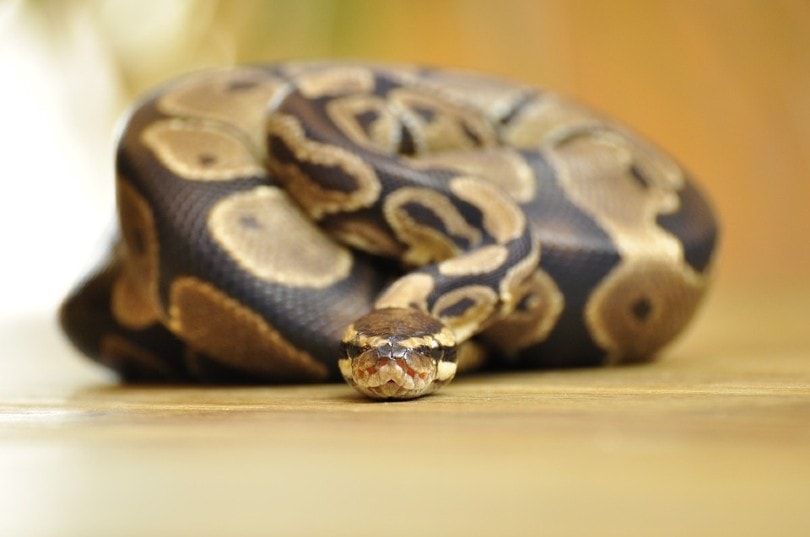
Conclusion
Even though it’s beyond impressive how your ball python can store energy, it’s also not something that should happen in captivity. Snakes should eat on a routine schedule, depending on their life stage. Sometimes, it’s okay to stretch a day or two if you forget, but you should never exceed 1 month in between feedings if you can help it.
If your snake has lost its appetite and you can’t figure out why, don’t hesitate to get them to your vet. These issues can be very time-sensitive.
Featured Image Credit: anythings, Shutterstock





